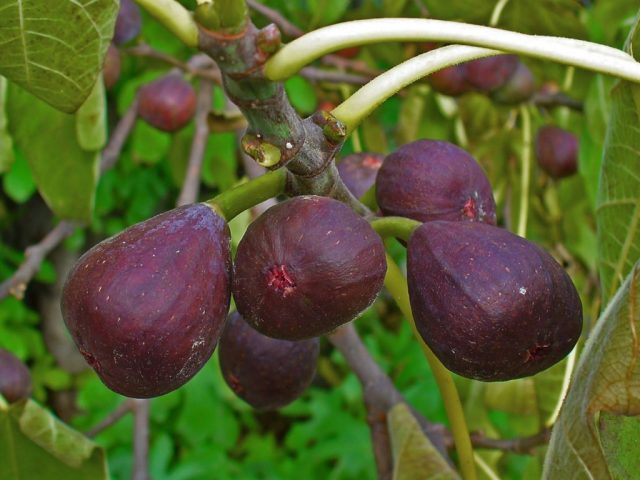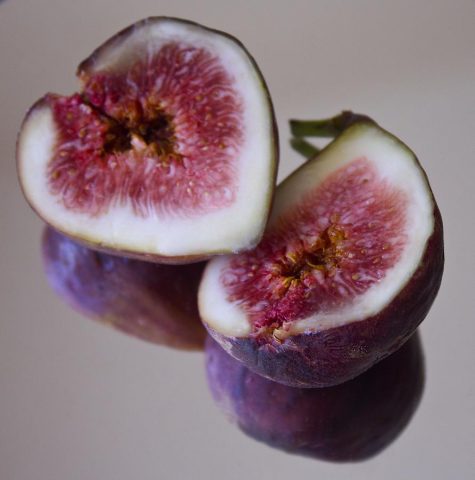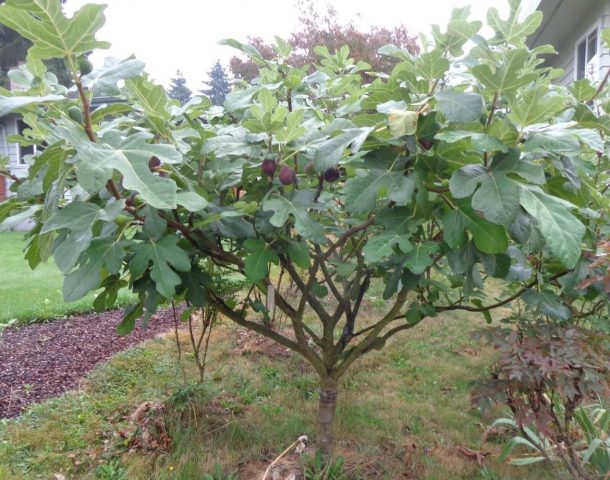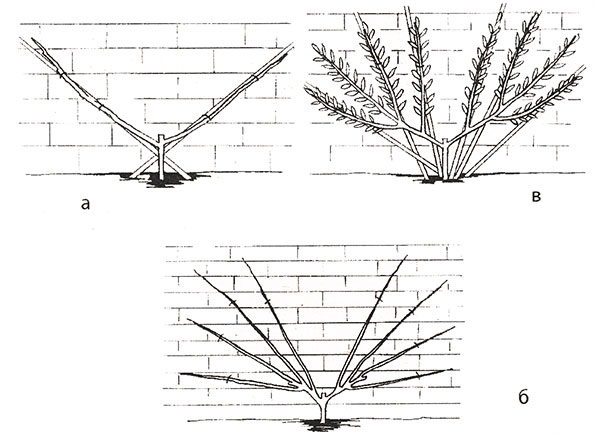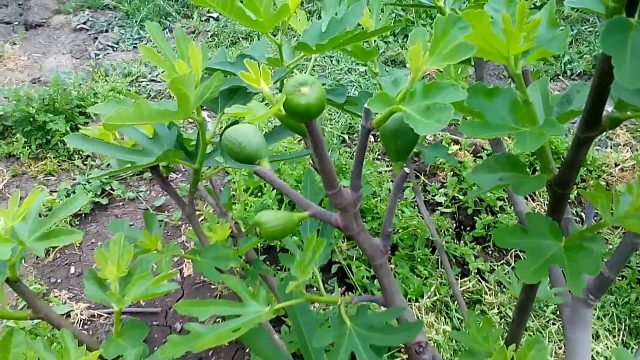Content
Fig Sabrucia Pink is one of the types of tropical plants that can grow and bear fruit on the territory of Russia. The variety was bred by the Nikitsky Botanical Garden and is the second most common variety on the Black Sea coast of the Caucasus. Subject to the peculiarities of cultivation and proper preparation of figs for winter, useful exotic fruits can be obtained in your own garden in the Crimea, in the Kuban, on the Black Sea coast.
Description of figs Sabrucia Pink
Fig has many names, leading their origin from different languages: fig, fig tree, wine berry. The fruits are sold and consumed fresh, dried, processed as a valuable food product and an element of traditional medicine.
Fig Sabrucia Pink, depending on the method of formation, can be a small tree with a columnar, bowl-shaped crown or a shrub. In favorable conditions, the plant lives up to 300 years without losing the ability to bear fruit.
The strong root system of an adult Sabrutia bush penetrates to a depth of 2.5 m, while actively developing all layers of the soil and requires regular watering. The shoots of figs are actively formed, which, without pruning, leads to a thickening of the crown.
The variety is early maturing. The first wave of the pink Sabrucius fig harvest, depending on the climate, ripens from June to August. The second fruiting occurs in late autumn. On the territory of Russia, where the climate allows for the cultivation of the fig tree in the open field, part of the unripe crop remains overwintering.
The fruits of Sabrucia Rosea, like all figs, are thickenings of shoots (syconia), resembling vessels with thick walls and juicy pulp with numerous round seeds inside.
Characteristics of the fruits of the fig Sabutia Pink:
- round or pear-shaped;
- brown peel with a reddish tinge;
- pale pink juicy pulp;
- dessert taste with a predominance of sugars;
- fruit weight from 100 to 150 g.
The variety Sabruzia Rosova is partially self-fertile and produces abundant crops without pollination. Entry into fruiting in young plants occurs 2 years after planting. The domestic fig variety is characterized by good frost resistance and is able to withstand cold temperatures down to -18 ° C.
Pros and cons of the variety
Fig Sabrucia Pink by description and photo is an attractive fruit crop, both for single plantings and for commercial cultivation. Reviews from experienced gardeners highlight the following advantages of the variety:
- Large, beautiful fruits.
- Delicate dessert taste.
- Versatility in application.
- Transportability and keeping quality.
- Ease of vegetative propagation.
- Resistant to typical garden diseases and pests.
- Possibility of cultivation on poor, rocky soils, slopes with a steep slope.
The disadvantages of the culture include the difficulty of obtaining two harvests, the need for a heated greenhouse for growing Sabrucia Pink in the middle lane. For all its unpretentiousness, thermophilic figs require careful preparation for winter.
Growing Sabrucia Pink
The tropical plant has several characteristics that must be followed to grow the exotic fig tree in temperate climates.
Landing rules
Seed propagation of figs is practiced by professional breeders and specialized nurseries. A varietal sapling of Sabrutsia, bought from a trusted manufacturer, takes root easily and quickly forms a dense crown.
In the process of pruning the bushes, cuttings are harvested from annual shoots, which take root well. It is easy to propagate Sabrucian figs by layering or by planting young root shoots. In this case, they act in a similar way to the reproduction of currants.
A place for planting a sapling of Sabrutsia Rosea is chosen in the most illuminated place of the site. Preferred southern slopes or places covered from the north by a small barrier (fence, wall). The composition of the soil, its acidity and nutritional value do not play a decisive role in the survival rate of a seedling of Pink Sabrucia. It is important to provide regular moisture to the roots, without flooding and prolonged soaking of the root.
The planting site is prepared, commensurate with the volume of the roots of young figs. The substrate removed from the pit is mixed with organic fertilizers and sand. Further steps for planting figs:
- The soil is poured in a slide in the center of the hole.
- A seedling is installed on a mound, the roots are straightened.
- Gradually pour in the soil mixture, lightly tamping each layer.
- The plantings are watered abundantly and the land is waiting for the complete subsidence.
- As a result, the root collar of the fig seedling should remain above ground level.
- Mass plantings can be done in small trenches, which will make it easy to cover the plants for the winter.
In the middle lane, the figs of Sabrucia Pink are planted obliquely, maintaining an angle to the surface of the earth up to 40 °. All stems are cut at a height of 20 cm, leaving only a few branches. Already the second season gives an increase in fruiting shoots.
Watering and feeding
The unpretentiousness of figs to the composition of the soil manifests itself in subtropical and tropical latitudes. This allows trees to take root in rock formations, steep cliffs and bear abundant fruit without special maintenance. In temperate climates, the plant requires more attention: feeding, watering, careful shaping.
The deep roots of an adult plant provide the pink Sabrucia figs with drought survivability and save them from freezing. In the upper layers of the soil, there is also a branched system of root shoots. Timely hydration of Sabrutsia significantly enhances the nutrition of the fig tree, increases the yield of the crop.
Watering is carried out as needed, making sure that the topsoil does not dry out completely. Figs respond well to mulching. Such a procedure not only retains moisture, but also ensures the maintenance of the soil in a loose state.
Deep and frequent loosening around young trees is impossible without damaging the surface roots. Therefore, for Pink Sabrutsia, it is recommended to mulch the trunks with loose cut grass.
Planting figs is fertilized monthly according to the following rules:
- In the spring - nitrogen and potassium-phosphorus compositions.
- During the growing season - mulching with humus with the addition of superphosphate and potassium salt.
- To enhance the formation of the ovary - foliar spraying with complex mineral compositions.
- After the first harvest - re-feeding with nitrogen fertilizers.
Fig Sabrucia responds well to pollination with wood ash, spraying it with solutions, which is both fertilizer and disease prevention.
Pruning
In a temperate climate, Pink Sabrucia is formed in several ways:
- in the form of small trees with a bowl-shaped sparse crown;
- like bushes with one or more trunks, like vines;
- in the form of a fan, with stems up to 2 m in height.
The fan-shaped method of forming a bush is most convenient in regions with cold winters. These trunks are easier to tie and lay on the ground without damaging them.
The main rule for pruning the Pink Sabrucia for any type of crown is to provide the figs with maximum light and ventilation. When removing all thickening growths growing inside the crown, attention is paid to the fact that the first crop is laid on last year's branches, and the second on fresh shoots of this season.
Basic principles for pruning figs:
- Work on pruning and shaping is carried out after the leaves fall or in the spring before the start of active sap flow.
- It is advisable to treat with garden pitch not only cuts of a large area, but also minor damage. Fig wounds heal slowly, which can weaken the bush.
- Young branches of Sabrucia Pink, left for fruiting, are pinched when they reach 0.5 m in length. This stimulates the development of lateral productive shoots.
- To obtain a tall tree in the future, the first pruning of figs is done at a height of 1 m, to form a compact plant, the central trunk is cut, leaving 50 cm.
In the early years, they create the desired crown shape, removing all excess growth. In plants 3-5 years old, lateral strong shoots are shortened by a third. Thickened figs lose in yield, and good lighting promotes the formation of ovaries. Therefore, sanitary pruning is required every year. Formation of an adult plant of the Pink Sabrucia is not required.
Preparing for winter
The conditions of a temperate climate in the warm season are quite consistent with the requirements of the tropical Pink Sabrucia. Figs need to be prepared for frost. When carrying out pre-winter work, it is important to take into account the peculiarities of the local climate:
- If subzero temperatures prevail in winter, often falling below the critical level for the Rose Sabrucia - 18 ° C, then the shelters are prepared thoroughly. They use wooden shields, roofing material, and sprinkle the trunks high.
- In mild but frosty winters, it is enough to tie the fig branches together and wrap the plant in several layers of non-woven garden material. The soil in the near-trunk circle is mulched with a layer of up to 10 cm.
- The cold season with a predominance of above zero temperatures and rare frosts does not require special conditions for wintering figs. It is enough to wrap the plant with breathable garden material. A well-covered plant in such a climate can completely dry out.
Shelter of Sabrucia the Pink from frost:
- carefully bend the branches to the ground and pin them;
- plant material is laid (leaves, needles, sawdust);
- cover with a layer of earth about 15 cm;
- arrange shelter with breathable material or wooden shields.
Before arranging Pink Sabrutsia for wintering, all trunks are treated with lime or a solution of copper sulfate (1%). Spray the trench and covering mass with the same composition.
Harvesting
Sabrucia Pink belongs to fig varieties with a medium-early ripening period. The first figs are removed from the bushes 80 days after the start of the growing season. When optimal conditions are created, figs are capable of bearing fruit twice a year. The first harvest of Pink Sabrucia is harvested from June to August, the second wave can begin in August, September and last until stable cold weather.
The fruiting period of Sabrucia Rosova is extended and ranges from 30 to 60 days. Ripe figs are harvested regularly, every few days. It can be difficult for an inexperienced gardener to determine the ripeness of the fruit and harvest them on time.
Signs of ripe Sabrucius figs:
- Figs have doubled in size.
- The color of the figs became rich and vibrant.
- Small drops of nectar appeared on the peel.
It is important to remove the ripe fruits of Sabrucia Pink on time - after 3 days they begin to wither. The shelf life of overripe figs is significantly reduced. The fruits dried on the branches are harvested for the manufacture of dried fruits.
Diseases and pests
A few years ago, the planting of figs in a temperate climate did not hurt at all, local pests did not pay attention to them. Preventive treatments of Rose Sabrutia were carried out in conjunction with other garden crops, traditional means (for example, solutions of copper sulfate).
As the figs adapted to local conditions, gardeners began to notice cases of infection of Sabrucia Pink by insects and some diseases.
Such infections and pests are capable of causing harm to the plant:
- coral spot - fungal infection;
- bacterioses - infection with various dangerous bacteria;
- white leafhopper, aphid, spider mite.
At the first signs of disease, figs should be treated with fungicides, insecticides or complex chemicals, respectively. All affected plant parts are carefully removed from the bushes and burned outside the site.
Conclusion
Fig Sabrucia Rosea is a good example of adaptation of a valuable tropical plant to conditions with cold winters. Thanks to the work of domestic breeders, tasty and healthy fruits can be grown in a variety of conditions. Today, Sabrutia Pink can be seen on the entire Black Sea coast of Russia, in the Crimea, in the Kuban, in the Caucasus mountains. The fig variety is spreading all the way to the north, where it is cultivated as a greenhouse and greenhouse culture.
